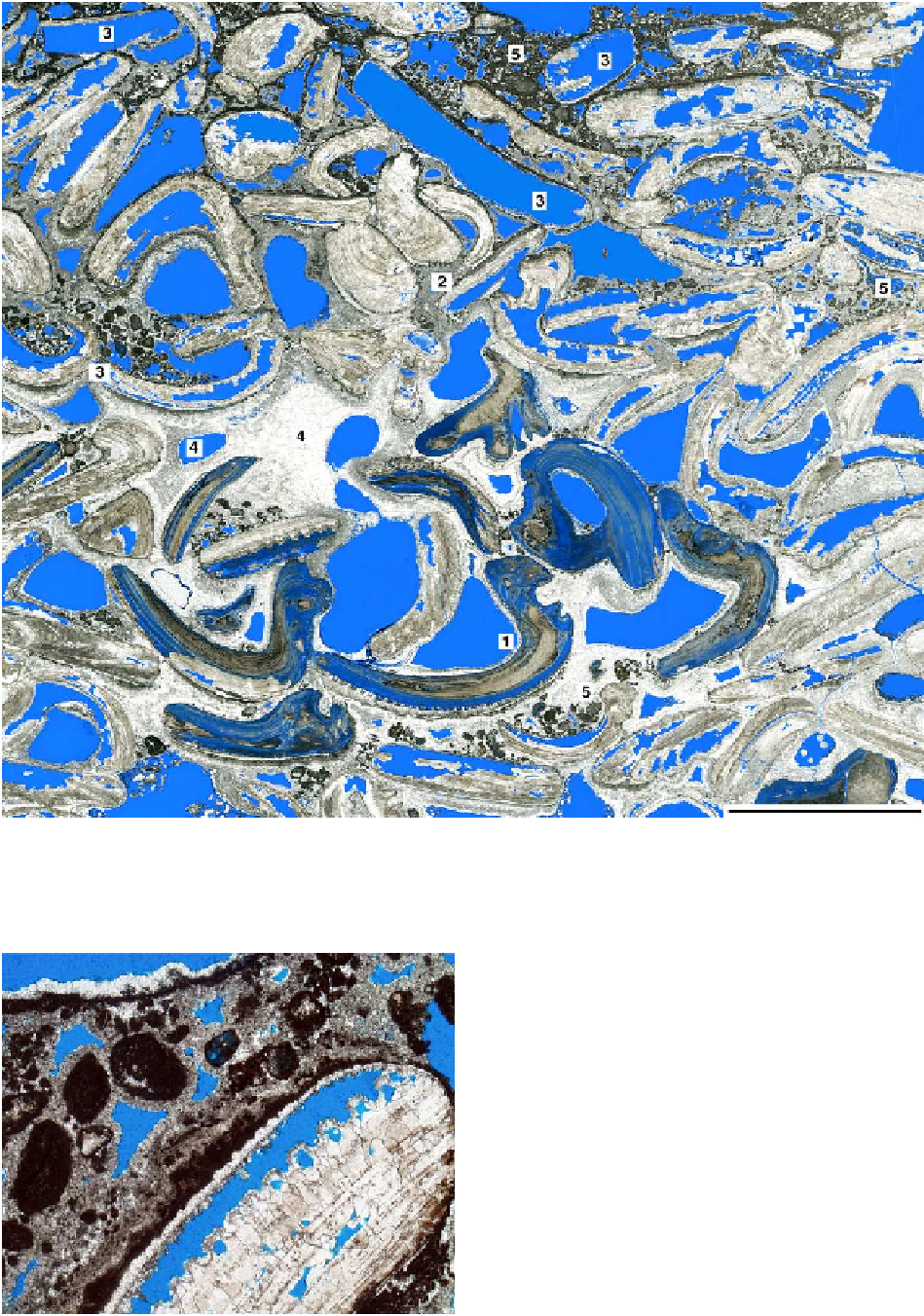Geology Reference
In-Depth Information
1 cm
Fig. 20.14.
Poorly cemented, highly porous coquina with interparticle and moldic porosity. Note different stages of preservation
of the originally aragonitic bivalve shells. Some shells are completely dissolved and their outlines are only visible because of
their micritic envelopes. Others remain nearly unaltered, still showing their original aragonitic skeletal microstructure. Most
of the shells, however, have been transformed to calcite spar, but part of the former internal structures are still visible in form
of 'ghost structures' (see below). This type of transformation is termed 'polymorphic transformation', and the resulting spar
is named 'neomorphic spar'. The alteration here took place
in the meteoric environment. Geopetal structures are
represented by an infill of peloids. Pliocene: Roman quarry,
Mallorca, Spain.
1- Preserved aragonitic bivalve shells, lamellae still visible,
2 - Shells, tangential cut, 3 - Completly dissolved shell
(moldic porosity), in places partly refilled with cement, 4 -
Cementation of pore space, 5 - Cement-encrusted peloids
Fig. 20.15.
Detail from the same outcrop. The primarily
laminated structure of the aragonitic bivalve shell can be
recognized by the ghost-like lamination running through the
freshly grown calcite crystals. Part of the shell remains empty.
The former outline of the shell is indicated by a thin
overgrowth of rim cement. Stabilization of peloidal grains
by rim cements. Locality as above.
2 mm

